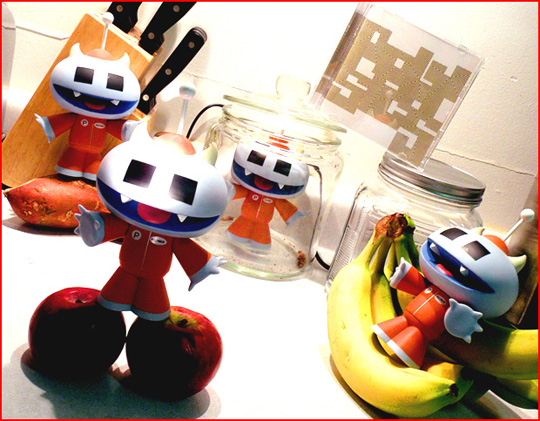
It's another year and time for another album from Polysics, a band that's been releasing a new album every year since their first release in 1999 (not to mention a constant stream of singles, EPs, compilations and DVDs along the way). Their profile has been constantly on the rise, hitting its peak in 2006 with the release of the "I My Me Mine" video featuring the robotic dancing of Strong Machine 2. (Oddly enough, aside from the Now is the Time! album, the song was only released as a 7" vinyl single in the UK.) They went on to sign with MySpace Records and go on progressively growing tours overseas.
For the uninitiated, Polysics is a highly energetic surf-rock guitar driven, new-wave band. They augment their four member line-up with with plenty of digital playback, lead vocals from three of its members as well as plenty of robotic, vocoded lines, making their digital material something of a fifth (or even sixth) member of the band. While the songs are pure pop at their core, the outer shell is abrasive, jagged, sweaty and very very loud. This is no gang of posing '80s fashion throwbacks playing pillowy soft-core synth pop or ecstasy-fueled chiptune children's music. This is a hard rockin' punk/synth monster. It's essential to experience Polysics in a live setting as their performances are non-stop mayhem. Front-man Hiro is usually drenched in sweat by the end of their opening song. Their visual look is equally unique, with all four members wearing matching neon-colored jumpsuits and sunglasses that are little more than a large black bar across their faces, a direct and very intentional nod to the band's biggest influence, Devo.
Ever since National P in 2003, arguably the band's strangest and most adventurous album, they have been dialing back the craziness. From Now is the Time! to Karate House and then on to We Ate the Machine, each album has become progressively less noisy and insane in favor of cleaner production and less jagged song structures. (For, again arguably, their best production, one must got back even further to 2002's For Young Electric Pop.) Even their reliance on Kayo's synths and other digital tracks has gone down. On Absolute Polysics she has a much more traditional role, playing less grating sounds and more straight up harmony to Hiro's guitar. She only has one song in which she has a lead vocal part, the album closer "Wasabi," but she is, for all intents and purposes, silent on the other 13 tracks.
By contrast, Fumi has been taking an increasingly dominant role on the band. While Hiro still takes on the lion's share of the song and lyric writing, Fumi has been getting more of a chance to take up this role, almost seeming to become a second band leader at times. This is a role that, in the past, Kayo seemed to fill. Fumi has been writing both lyrics and music more often and has been filling more of the alternate singing roles as well. This isn't exactly new, and probably isn't a major factor in the band's slow sound shift, but it's also worth taking note of.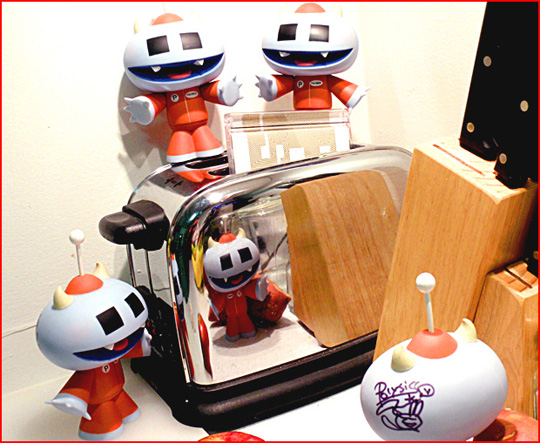
Absolute Polysics starts off very strong with “P!,” the usual brief, instrumental introduction full of enegertic synths and even a marching band whistle counting off the measures. This is followed up with the album's two singles, "Shout Aloud" and "Young OH! OH!," both of which are among the album's strongest songs. The former is certainly the most intense track on Absolute and contains all of Polysics' signature moves. It has a practically non-stop metal-industrial beat, complete with blinding fills from Yano on the drums, frantic guitar arpeggios and ascending scales all over the place. There are three vocal treatments as well. Hiro's usual, chirpy delivery, a bridge from keyboardist Kayo, a vocoded chorus and even a massive crowd chant mid-way though. "Young OH! OH!" pulls the tempo down just a bit, but it's just as energetic and infectious. The silly, whispered "young oh oh!" breaks and straight-ahead beat make it impossible to not both smile along with and bob along to.
"Hypnotized GO" keeps the fast beats going, but this time in a much more electro/industrial vein. It's actually a bit of a departure for the band, being dark like a late P-Model track than their usual new-wave rock. The songs doesn't really do much more than pound along like a robot hammering out miles of sheet metal.
This is followed by the short instrumental "Time Out." An obvious homage to Devo's "Timing X," it severs as an early break in the album's frantic pace. 
"Bero Bero" is the first strange track on the album, which is what most long-time Polysics fans will be expecting. It has all the de-tuned and jagged synths that are missing from the first part of the album. It also has some pretty bizarre vocals from Hiro who, for what seems to be the chorus, simply goes something like "blublublublubulbulbulbulbulbuuyeah!" That's followed by “Cleaning,” the most straightforward and radio friendly track, written entirely by Fumi. It's much like "You You You" and the Polysics of Die reworking of "Black Out Fall Out." It's a simple, poppy rock song devoid of anything too harsh or wacky. In a way, it's one of the standout track just because it's so “normal.”.
"E.L.T.C.C.T." is another example of what Polysics does best. Sung by Fumi, it has an odd time signature, stuttering syncopation and lots of chaotic noise in the background. Then all of that is cast aside as the shining, sing-along chorus breaks though, bringing back the pure pop-bliss, before then dropping back into the oddly timed "Every girl knows, Every boy knows this, Every thing can cause trouble" chant (again, with a possible nod to the beat in Devo's version of "Satisfaction.")
"First Aid" and "Fire Bison" are again something of a 1-2 punch. They fill in the requisite amount of raw, distorted rock, similar to "Hard Rock Thunder" and "We Ate the Machine" from previous albums. The band simply turn up the amps and fill the air with noise. "Fire Bison" mixes it up a bit, using a more electronic base. Both Fumi and Yano chugging along though most of the song and there's even a heavily effect violin, played by Yuji Katsui (of Bondage Fruit) at the end. Yet both of these songs are a little unremarkable due to their being pretty basic and surrounded by so many other memorable and quirky songs.
In a sort of mirror to the beginning of the album, "Eye Contact" is something of a break from all the rocking. It's totally electronic, featuring a very basic electro beat and bass line. Hiro's vocals sound a bit like the rhythm from Devo's "Redeye Express" and the synths seem to be taken straight from Kayo's version of "Saraba Siberia Tetsudou" from her solo album, neither of which is a bad thing. Overall, it's a nice break in tone, but it's another example of a song that seems to be either half finished or just stuck on the album for filler.
"Beat Flash" is a return to the same clean and fast sound on "Shout Aloud," which isn't a surprise since it was the b-side to that single.
"Speed Up" is the one real clunker on the album. It's almost as if it missed getting mastered, sounding totally flat, muddy and quieter than the rest of the album. It does have a nice, catchy chorus, again like "You You You," but the rest of the sing just seems dull and phoned in. Again, this could simply be a result of the piss-poor production. Any of the other b-side releases from the singles would have been a better fit.
The final track "Wasabi," is the real hidden gem. It's the most unique song on the album, featuring Kayo singing in a high voice that has a feel of the Buggles' "Video Killer the Radio Star." The song itself feels a bit like "Miss Donuts" off of the Kaja Kaja Goo EP. It's very poppy, with twinkling xylophone sounds and a nicely dissonant bridge thrown in. Plus, it's the only song to really feature Kayo, something that is sorely missing from the rest of the album. The very end of the song, and the album, features some backwards screaming and other chaos that quickly fades out, providing a very unceremonious and abrupt end. 
The overall lack of variance to the album's production, the sameness to the feel of every track, makes Absolute Polysics a bit of a disappointment in the “wow” department. There are a some great songs and interesting ideas, but they seem to be spread very thin. "Shout Aloud" and "E.L.T.C.C.T." are packed with exactly the right amount of catchy song writing versus zany structuring. "Bero Bero" and "Wasabi" provide the strangeness and playfulness that really defines the band. Everything else? Certainly not bad, but also not so great. The lack of Kayo's lead vocals and the way in which her usually squelchy and abrasive synths are pushed far into the background in favor of the cleaner production also leaves the songs sounding a little too even. On the other hand, it's much easier to make out what everyone is playing, something that was lost on the band's earlier, and more noisy, releases.
Maybe that is what's missing. That sense of the band playing live in a big room. The feeling that everything is on the verge of falling apart and exploding. That dirty new-wave punk sound. Now they are clean and precise. Once again there is the feeling that this album has been churned out at break-neck speed, written more to meet a contractual deadline than for the fun of playing loud and fast. It's still a work of occasional genius, packing more material into most songs than other bands use on an entire album. Absolute Polysics is an album that only becomes more awe-inspiring on repeat listens. Yet it's tough to not see how the band is evolving (or, of course, DEVOlving) toward an almost clinical, assembly-line method of song writing.
As an added bonus for fans, there is also a special edition version of the releases that includes a DVD. In that disc are the videos for “Shout Aloud” and “Young OH! OH!.” But the real attraction is the six, yes six hour documentary of the band recording in the studio. In this film, we get to see the band recording a new, and very short, song from beginning to end. Hiro brings the song in as an all electro demo, playing it off of a computer a few times for the band to hear and take notes. They then gather together and play the song through a few times, working out exactly what to play. It's all pretty self explanatory, really. The band play the song though together, then they individually go back and re-records their parts until the song is done. The entire session is shot without a break, give it a sort of impossible-to-look-away feel since there are never any obvious gaps. Oh, and as a gimmick, when a band member walks off-camera to go into another room, they almost always return wearing a different t-shirt. It's a surprisingly effective way to keep people watching, since the actual action in the studio is about as dull as you may expect. Fans will no doubt find it interesting to see the band at work, regardless of having to hear a 30-second song hundreds of times.
In the end, Absolute Polysics isn't the best thing Polysics has ever done, but it's not bad by any means. The songs will likely translate better in a live setting, which is where people should be seeing the band anyway. If nothing else, Absolute Polysics is simply a good excuse for the band to go out on tour and tear up stages around the world. Who could blame them for that?
"P!"
"Shout Aloud"
"Beat Flash"
"Young Oh! Oh!"
Review: Polysics - Absolute Polysics
Subscribe to:
Post Comments (Atom)



























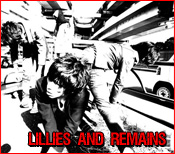
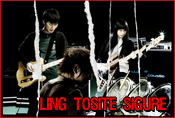
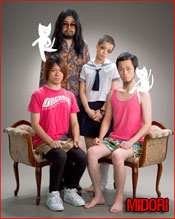


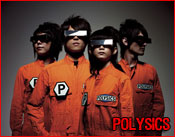




1 comment:
Good review I totally agree with the last paragraph!Personally loved speed up and I thought the album was much more solid than we ate the machine. Keep up the great work!
Post a Comment